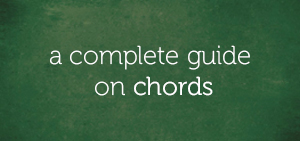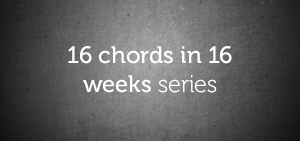In today’s advanced hymn breakdown, we’ll be focusing on the hymn Pass Me Not O Gentle Savior.
If you’re interested in learning a couple of advanced chords, chord progressions, nuances, techniques, and tricks that can be used to spice up regular hymns, then this lesson is for you.
We’ll be breaking down the above-mentioned hymn in the key of Db major:
Db is the first tone
Eb is the second tone
F is the third tone
Gb is the fourth tone
Ab is the fifth tone
Bb is the sixth tone
C is the seventh tone
Db is the eighth tone
Let’s get started!
A Short Note On Hymns
I’m aware that in the 21st century, there’s been an evolution of several contemporary approaches to hymn songs. It’s also possible to attend a church service where hymns are not used in worship for certain reasons and that’s fine.
However, there’s no gainsaying the fact that hymns are an integral part of christian worship because there are hymns for every season (Christmas, Easter, and so on), time of the day (morning, noon, night, and so on), message (repentance, forgiveness, and so on)
From the structure of hymns to it’s melody and harmony, hymns are purely liturgical and believe it or not, hymn songs have a way of creating a worship atmosphere.
If you’re lucky (like me) to belong to a denomination where hymns are sung, then you have to be thankful because you’re about to learn a couple of chords and progressions that can help you spice up the hymn segment in a worship service, especially if you’re stuck to the basic version.
An Overview Of The Hymn
Here’s the lyrics to the hymn:
- Pass me not, O gentle Savior,
Hear my humble cry;
While on others Thou art calling,
Do not pass me by.- Refrain:
Savior, Savior,
Hear my humble cry,
While on others Thou art calling,
Do not pass me by.
- Refrain:
- Let me at Thy throne of mercy
Find a sweet relief;
Kneeling there in deep contrition,
Help my unbelief. - Trusting only in Thy merit,
Would I seek Thy face;
Heal my wounded, broken spirit,
Save me by Thy grace. - Thou the spring of all my comfort,
More than life to me,
Whom have I on earth beside Thee,
Whom in Heav’n but Thee.
A Simple Analysis Of The Melody
The melody of the song in the key of Db major:
…starts on the third tone of the scale (which is F):
…and ends on the first tone of the scale (which is Db):
It is also important to note that it encompasses an octave from Ab (which is the lowest pitch in the melody):
…to Ab (which is the highest pitch in the melody):
An Advanced Breakdown Of The Hymn
Before you proceed, kindly check out this advanced approach to the hymn:

The Intro
Although every section of the song is important, however, the introduction (aka – “the intro”) is a very delicate section of the song. It is important for [a fragment of] the melody of the hymn song to be part of the intro because it has a way of mirroring in the song.
The 2-5-1 Chord Progressions
The strongest root progressions in music is in ascents of fourths and descents of fifths. This explains why the 2-5-1 chord progression is commonly used in popular music styles like gospel and jazz.
The 2-5-1 chord progression entails the harmonic movement of chords from the second degree of the scale, to the fifth degree of the scale, the to the first degree of the scale.
Although there are major and minor 2-5-1 chord progressions in this hymn, there are minor 2-5-1 chord progressions you must take note of…
The minor 2-5-1 chord progression to chord 6:

The minor 2-5-1 chord progression to chord 2:

Attention: Chord 2 and 5 in both cases featured the dominant 7(b9) chord.
The Hymn Techniques
There are two techniques that should not escape your notice in this hymn. The first one is the turn that was played at the intro, and the second one is the glissando, which is also known as the piano gliss.
“Check Them Out…”
These are little but powerful elements that can take your hymn playing to the next level.
The Concept Of Side-Stepping And Resolving
If you’re interested in incorporating some chromatic elements into hymn songs, then I recommend that you try the concept of side-stepping and resolving.
This concept entails the temporal movement OUT of the prevailing key, to another key that is a half-step above the prevailing key. This was applied twice in this hymn.
Notice how the melody shifted from the prevailing key which is Db major:
…to another key that is a half-step below (which is the key of C major):
“…And The Second One…”

The hymn is supposed to end with a mid-tempo run over the Db major ninth chord, however, we side-stepped to the D major ninth chord, and played an ascending run for the Db major ninth chord, before resolving with a descending run over the Db major ninth chord.
The Reharmonization Of The Melody
One of things most top players turn heads with is the reharmonization of the basic chords to the melody of a song.
“Listen To The Excerpt Below…”

Take note of how each melody note is accompanied with advanced chords, and how it adds an extra dimension to the hymn song, taking it out of the regular and making something “exotic” out of it.
Turnaround Chord Progression To Chord 4
The regular destination for the turnaround is to chord 1 – the Db major ninth chord. However, we’re switching it up to chord 4 – the Gb major ninth chord.
Final Words
It’s been an exciting lesson so far and I’m certain that you’ve learned a couple of things from all that we’ve covered in today’s lesson.
Before we meet again in the next hymn breakdown, I want to recommend that you transpose this hymn to other keys on the keyboard.
See you in the next lesson!
Chuku Onyemachi
Latest posts by Chuku Onyemachi (see all)
- The Formation Of Diminished Seventh Chords Used To Be Challenging Until I Did This
- How To Form Seventh Chords In Two Shakes Of A Dog’s Tail Using Third Intervals And The Circle Of Fifths Chart
- I Played The 13sus4 Chord And This Happened…
- How To Build Seventh Chords Like An Architect Using “Foundation And Structure” Concept
- This 4-Week Plan Will Help You Master All The Major Scales







Comments on this entry are closed.